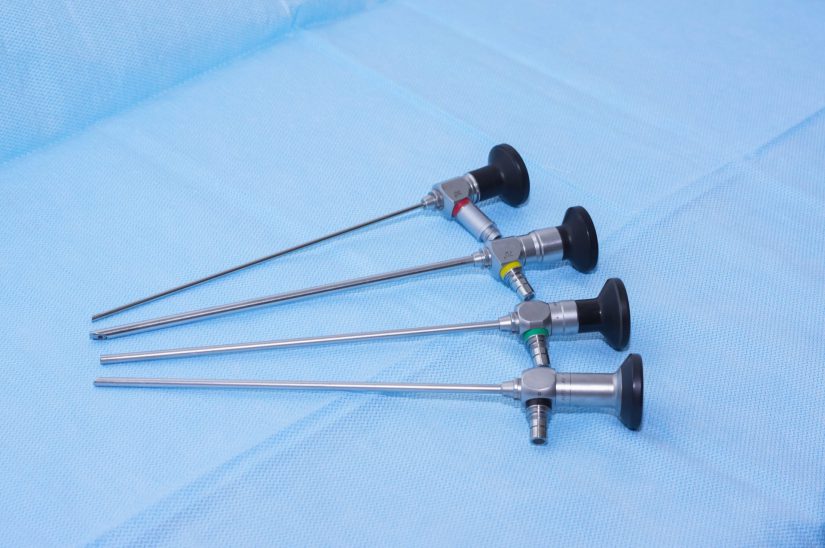Arthroscopic Surgeries
Medical conditions that affect joint mobility, such as sports injuries, arthritis, and other signs of joint degeneration, can cause severe pain and reduce overall body strength. This condition can impair your ability to move and can create high levels of pain. Arthroscopic surgeries are an intervention strategy that helps relieve these issues through the removal of the tissues and bones that are causing distress. To find out what style of arthroscopic surgery would be the best approach for you, you can contact a highly educated team of doctors who are experienced in orthopedics, neurosurgery, and pain management. Call Ceda Orthopedic Group to find out if this may be the best option for you.
What Are Degenerative Joint Conditions?

When your joints fall into disarray due to wear-and-tear or trauma, degenerative joint disease can happen in the knees, elbows, ankles, hips, wrists, and shoulders. Typically, doctors diagnose whether it is a minor injury or a joint disorder by using an X-ray scan. The joints are affected when there are torn ligaments, loose bone fragments, torn cartilage, inflamed joint linings, and scarring around the joints. These conditions can seriously reduce your ability to live a normal life and can cause discomfort, limited mobility, and weakness in the affected limbs.
What Do Arthroscopic SurgeriesTreat?
General disorders in the joint can be treated by arthroscopic surgery, however, it is best to speak with a doctor to find out if surgery is the right approach. This is highly dependent on the type of degenerative disease and the stage it is at.
Restricted range of motion
You might have damaged cartilage or the inability to move due to the affected area being in pain. Chronic high levels of discomfort in your limbs and joints can eventually prevent you from being able to perform normal tasks.
Joint stiffness
Tendons and ligaments within your joints help you to move freely, however, when these areas are damaged, your joints can lose their stability. Joint stiffness makes it difficult to move your limbs.
Knee pain
Knee pain can happen due to injury, over-use, or a degenerative disease. The underlying reason could be torn ligaments, worn cartilage, or nerve compression.
Ankle pain
Ankles are delicate areas that are prone to sprains and strains. However, ankle pain can be caused by more than injury, and can also be due to worn-out tendons and ligaments in the ankle region.
Shoulder pain
You may have shoulder pain due to worn-down joints or other degenerative diseases. This can make it difficult for you to turn your head, move things with your arms, and can even prevent you from getting enough sleep at night.
Weakness or muscular instability
Your tendons and ligaments keep your joints aligned, and cartilage helps lubricate joint movement so that the bones glide smoothly against each other. When any or all three deteriorate, your limbs become weak and the muscles unstable.
Clicking joints
Clicking joints happen when you hear a cracking or snapping sound every time you move an arm or leg. This is because the cartilage between the bones isn’t properly supporting the movement within your joint. This can be a sign that your joint will develop a degenerative disease.
Swelling
Joints sometimes become inflamed and bloated when they are injured. You may experience chronic swelling and edema in the region that is in pain.
Would I Be A Good Candidate for Arthroscopic Surgeries?
If you are experiencing severe pain and reduced mobility even after you attempted to try rest, ice, compression, and elevation (RICE), then arthroscopic surgery may be a better approach. This can also be the case if physical therapy hasn’t improved your prognosis.
If you have advanced osteoarthritis, otherwise known as severe degenerative joint disease, you may not be a good candidate. This is because the joint cartilage has been fully removed from the bone, and will require another method of treatment. If the space between joints has been excessively narrowed, this is also a concern and may not be treatable by this method as well. Arthroscopic surgeries can cause more harm in this case.
How Does The Arthroscopic Surgery Protocol Work?
When you have pain that doesn’t improve after other forms of therapy, arthroscopic surgery can help improve your outlook by providing another solution. It can be used to treat joint degenerative diseases in these areas of the body:
Knee
This surgery can help if you have cartilage tears in your knee or have an anterior cruciate ligament tear. It can also be used to treat chondromalacia, otherwise known as the injury of the knee’s cartilage cushion.
Shoulder
Shoulder impingement rotator cuff syndrome and recurrent shoulder dislocation can be treated with this surgery.
Ankle and Elbow
Any bone spurs, loose cartilage, fragments of bone, or other issues that are causing ankle or elbow pain can be treated using this surgery.
Wrist
This surgical procedure can be used to treat carpal tunnel syndrome and also remove any cartilage and bone that is creating pressure on the median nerve.
Arthroscopic surgery can be used to resolve acute and chronic injuries. The surgeon performs this operation by making a few small incisions around the affected area. Saline water is pumped into the joint region to create space and expand the area, allowing the surgeon to see the damage. The surgeon will use surgical tools to remove the damaged tissue and perform corrections. The saline is then drained and the incision closed. You receive follow-up treatment and instructions after the procedure.
Should I Choose An Arthroscopic Surgery For My Joint Disease?
Instead of deciding what type of surgery is right for you, you should let an expert diagnose your joint disorder and let you know what are the best steps. You can speak with experienced physicians who can help you. Contact Ceda Orthopedic Group for more information.
